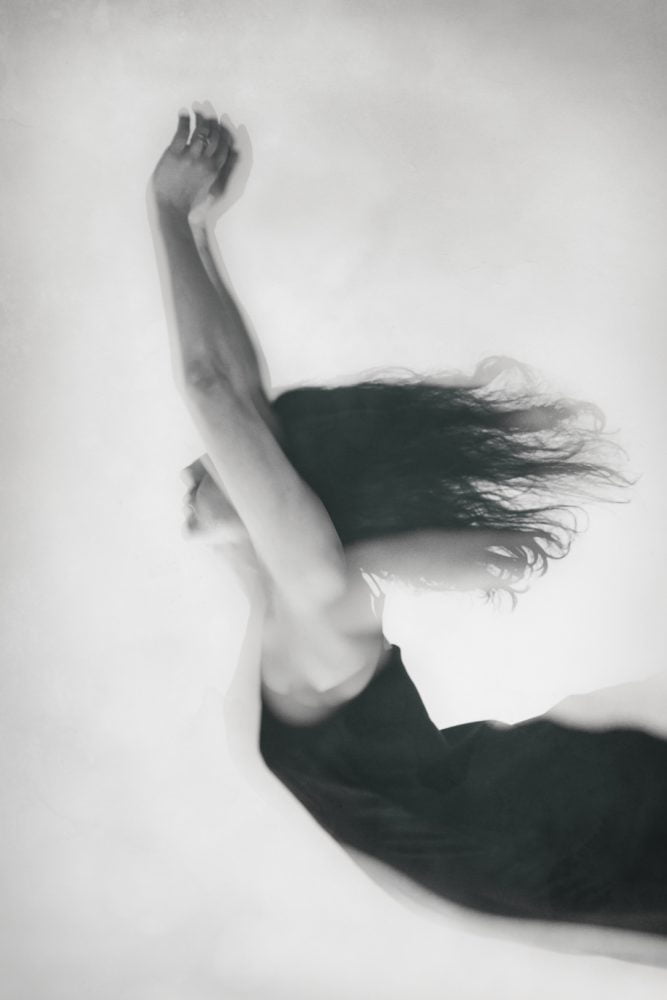I’ve always been drawn to black and white photography. There’s something that’s both simple and striking about a monochrome image, especially a portrait, where the absence of colour strips away a layer and allows light and emotion to take centre stage.
That said, my own experiments with black and white photography have previously been less than impressive. I’ve started at least two series of images that I intended to be black and white and found that the colour was just too important to the concept to not keep. In fact, up until this year, my portfolio included no monochrome imagery at all.
I’m not sure what it was that shifted my mindset but in 2020 I have shot more black and white self-portraits than colour and they have become some of my favourite images.
The advantages of black and white photography
It lends itself to simple, bold composition
I shoot mostly in my house and always have. In some ways it’s a matter of convenience – when I’m inspired to shoot my space is right there. Self-portraiture for me is also a very personal method of creativity and communication and I like to have my own time and space to explore this – something I don’t always feel when shooting in public spaces. Add to that the restriction of being in lockdown for the best part of the year and shooting at home has been the only logical option for many photographers.
All of this means I’m often shooting in very plain spaces – against a blank wall or with a makeshift backdrop. Black and white photography is often more successful with less going on in the frame. Without the context of a location to add story or interest to the image it becomes more important to really consider the remaining elements – light, shadow, composition, focus, props and posing.
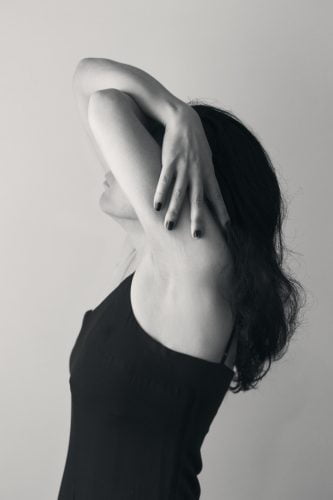
It adds timelessness
Black and white portraits will always invite more of a classic feel, a throwback to the days of film. Adding elements such as texture, grain or softness through creative focus and motion add to the vintage feel.
It reduces distraction and increases flexibility
Colour theory is an art form in itself and getting the balance of colour in an image right is a key factor. When shooting in monochrome it becomes all about the tone. I’ve shot on a green backdrop that never would have worked in colour but produced a beautiful neutral grey in black and white.
It’s also the reason that a majority of street photography is shot in black and white – with so much going on, removing the colour can reduce distraction and direct the focus to the intended subject.
Tips for black and white self-portraits
Look for the light
Light is one of the most important things in all photography but it’s especially relevant in black and white. Working entirely in tone and contrast means the light and shadow becomes a key part of successful composition. Look at where the light is coming from and the quality. Is it soft or hard? Which direction is it coming from? Can you use it creatively to highlight shape and form? Can you make use of the shadow?
Consider contrast
This relates firstly to the light but also to the decisions you make about background and location. If I’m shooting against a black backdrop, I can choose to wear white so I have distinct separation from the background, drawing the eye to the brighter part of the image or I can choose to wear black and really play with blending light and shadow. Be aware of too many neutral greys that may make the image look flat.
Experiment with shape
In a simple image, dynamic posing allows you to add interest with nothing more than yourself. Look for the shapes your body makes in your pose. Curves allow the eye to flow smoothly through the image. Triangles are a great compositional tool – look for how you bend your arms and legs and the spaces you create between limbs and the body.
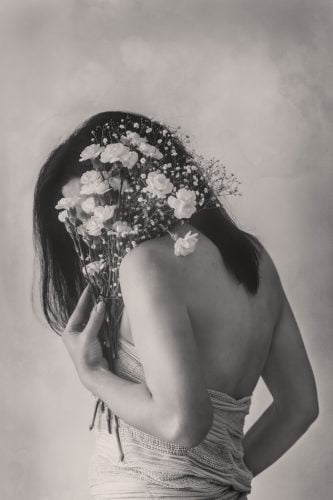
Keep it simple
As mentioned above, black and white lends itself to simplicity and bold composition so don’t overdo it with props, background or wardrobe.
Add texture
Texture can be added in two ways. In camera, through the use of fabrics, props and backgrounds and in editing by adding texture overlays. Again, the absence of colour really forces you to consider the other elements in the image and texture adds another level of detail and depth.
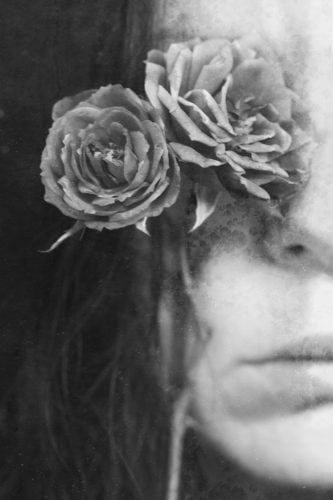
Shoot on monochrome mode
Most cameras will have a monochrome mode, allowing you to see your images in black and white as you compose and shoot. Digital cameras will usually capture the colour version, even when shooting in monochrome so you can easily change your mind later but seeing the black and white version as you shoot gives a good idea of what your finished image will look like and allows you to make any needed adjustments to lighting, wardrobe or composition.
Play with editing styles
Even in black and white there are any number of ways you can edit your image for different effects. Strong contrast will produce a bold and graphic image, while reducing contrast adds softness and a more timeless feel. Adjusting individual hues in an image while in black and white (this can be done in both Lightroom and Photoshop) enables you to selectively adjust brightness and contrast – for example, brightening reds and yellows in a portrait will brighten skin tones.
There are also different ways to convert an image to black and white in editing, from simply fully desaturating an image to adding a black and white adjustment layer. In the image below, I used a gradient map to create the black and white effect so I could add different shades of black, white and grey to the shadows, midtones and highlights (read more about the making of this conceptual self-portrait).
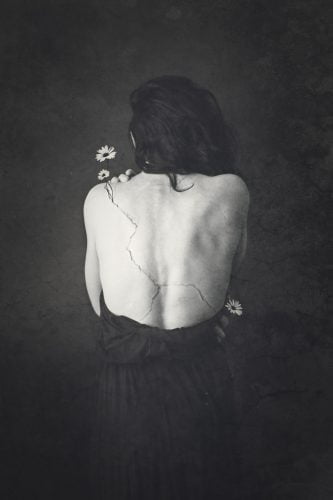
Creating black and white images has taught me some new skills in both composition and editing and has also pushed me back to remembering some of the basics of image design. I still have so much room to experiment with in black and white photography – I’d like to shoot a series in monochrome which will be another level of planning but I’m excited about the challenge and the results.
Looking for more monochrome inspiration? Visit my Black & White Photography board on Pinterest
